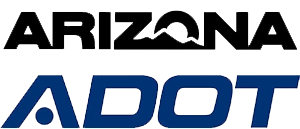ADOT’s US 89 reconstruction honored as ‘Project of the Year’
ADOT’s US 89 reconstruction honored as ‘Project of the Year’
PHOENIX ‒ After a 2013 landslide closed US 89 and split the communities of Page and Bitter Springs, the Arizona Department of Transportation completed a critical $25 million repair. Now an industry publication has honored that effort as one of the top projects completed in 2015.
Engineering News-Record Southwest selected ADOT along with its contractors – FNF Construction for the construction work and AECOM for the design – for the 2015 Project of the Year in the highway/bridge category. The honor earns the US 89 project consideration for the Best of the Best Projects 2015 Awards, judged by construction industry professionals from across the country.
“ADOT, along with our design and construction contractors, rose to meet the technical and logistical challenges of the US 89 repair,” said ADOT Director John Halikowski. “The result was not only industry recognition, but also the restoration of an important highway for thousands of people in northern Arizona who depend on the corridor as their connection to the rest of the state.”
ADOT assembled a team of engineering experts to develop a long-term solution for restoring this vital route near Page. The nine-month-long project, which started in July 2014 following extensive environmental and geotechnical work, removed about 1 million cubic yards of earth and rock to realign a 1,500-foot section of roadway and create a rock buttress to help stabilize the area.
While working on the long-term solution, ADOT paved Navajo Route 20, which was mostly a dirt and sandy road stretching from Bodaway-Gap to LeChee, to serve as the temporary US 89 route. This reduced the length of the original established detour route (US 160 and State Route 98) in half, and served as the short-term solution for motorists heading to and from Page until the US 89 reconstruction was finished last spring.
The reconstruction project was paid for through emergency relief funds from the Federal Highway Administration.
